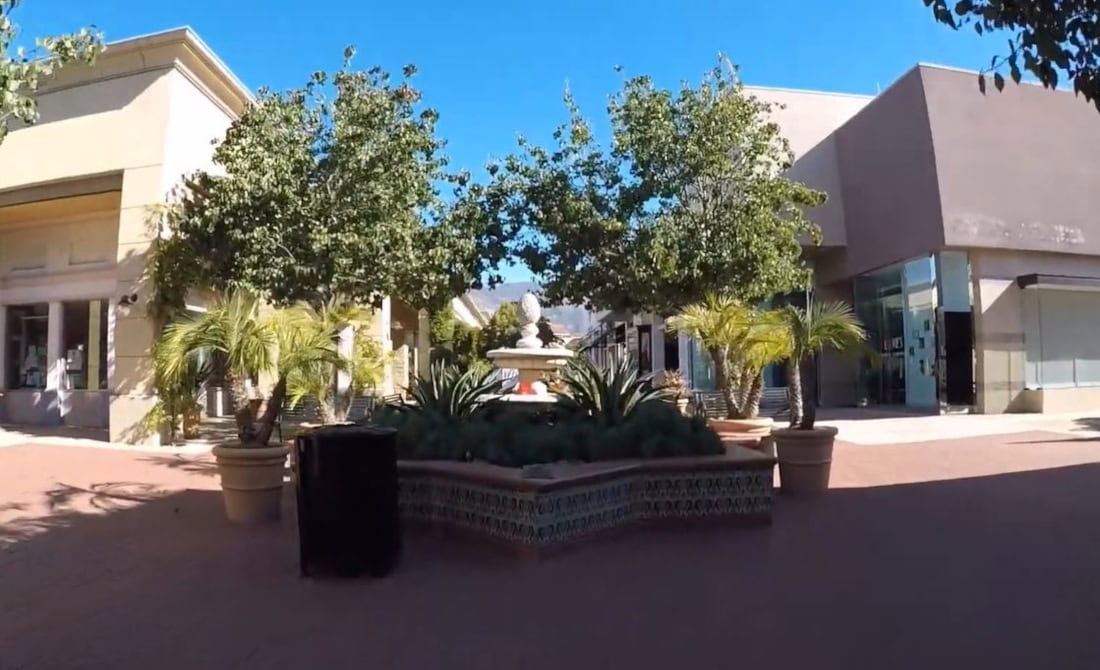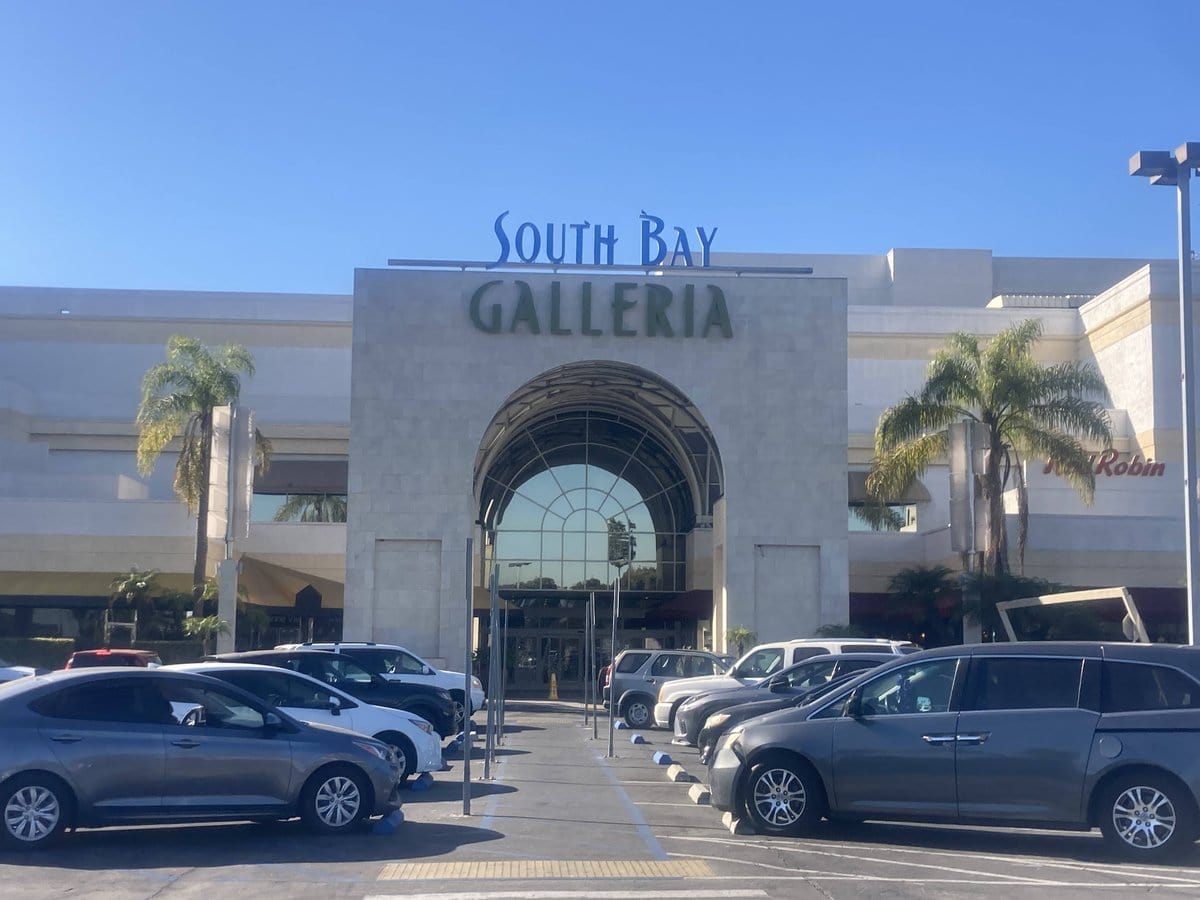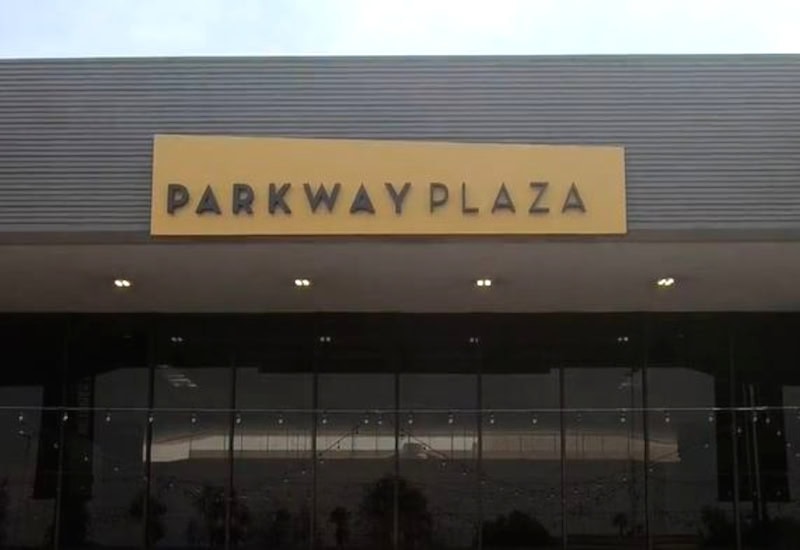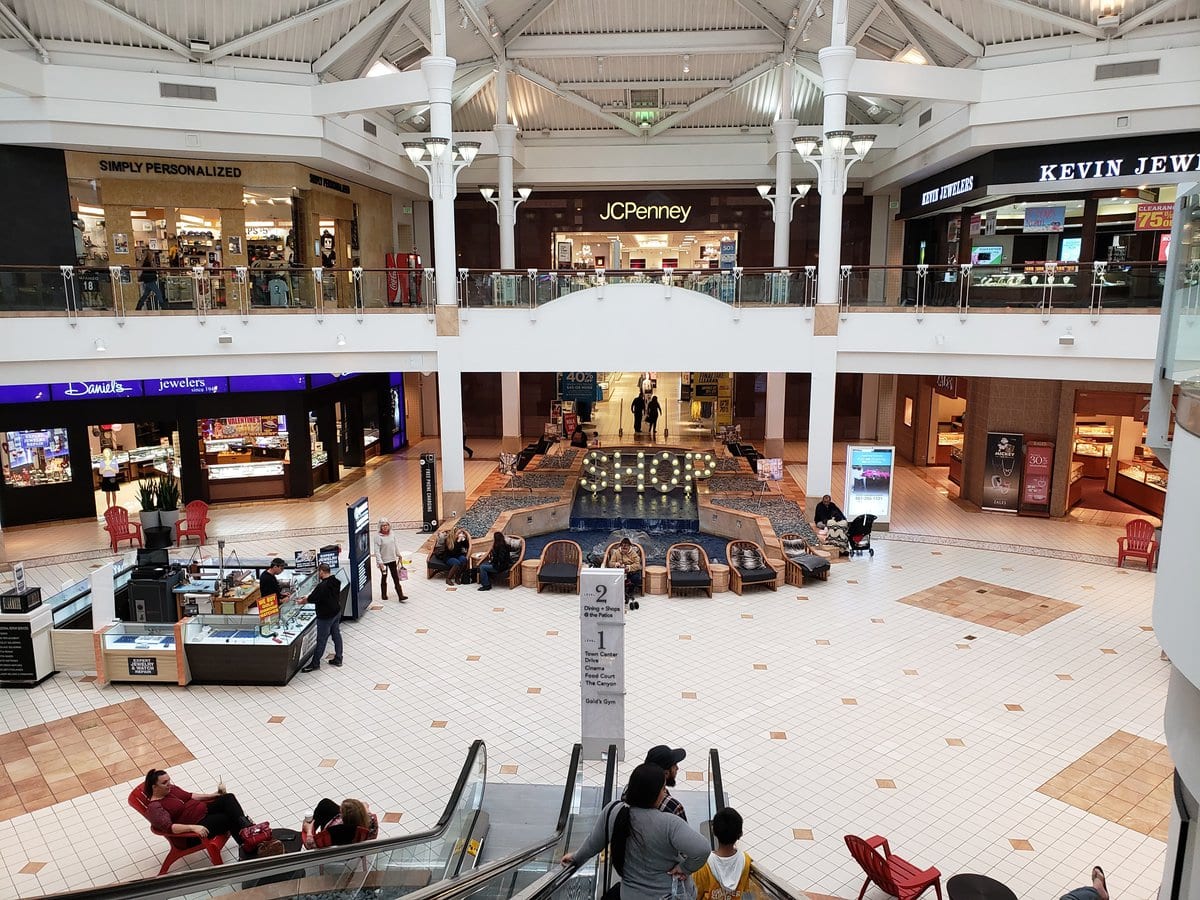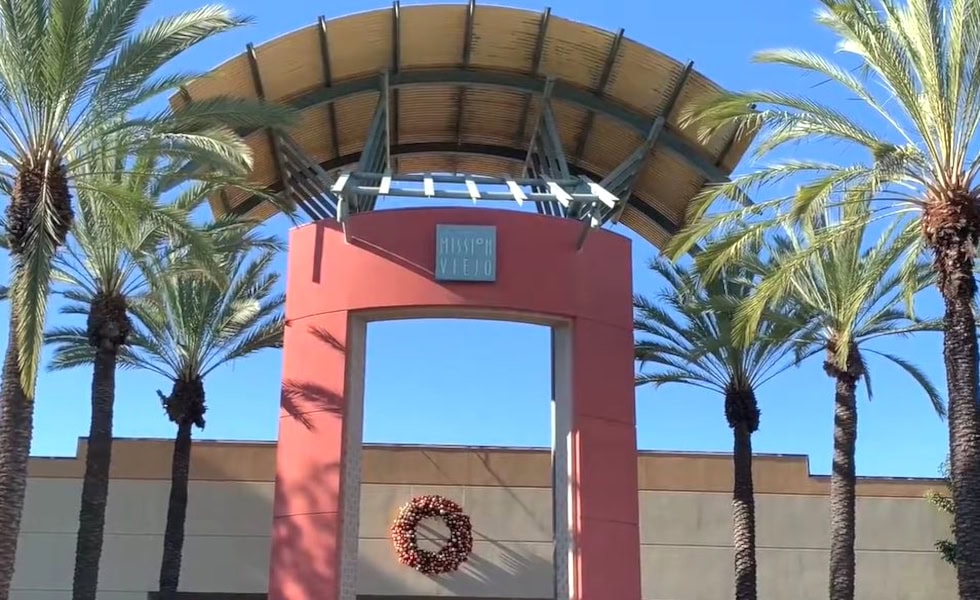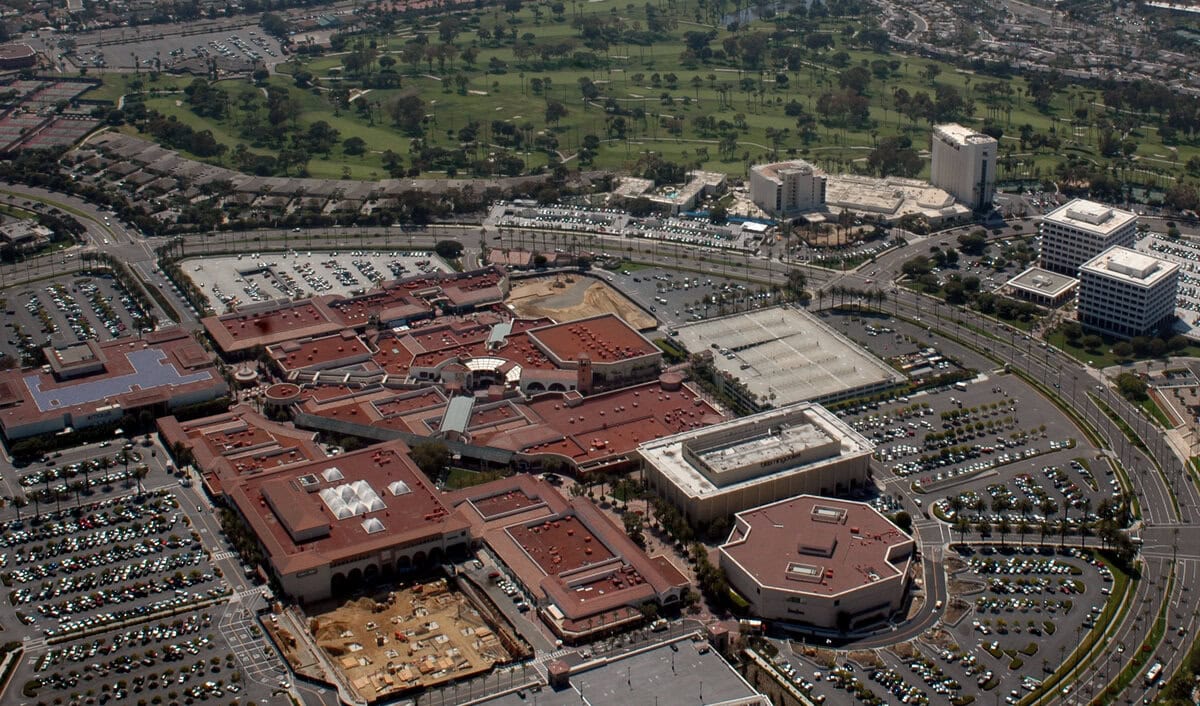Sherman Oaks Galleria's Early Groundwork and Opening
In the early 20th century, the parcel of land at the intersection of Ventura and Sepulveda Boulevards in the San Fernando Valley was part of a much larger story.
That tract was originally included in a 47,500-acre acquisition by the Los Angeles Suburban Homes Company from Isaac Newton Van Nuys in 1910, for $2.5 million.
From that acquisition, developer Moses Hazeltine Sherman held onto roughly 1,000 acres in the vicinity of what would become Sherman Oaks (named for him).
In 1927, he subdivided that parcel, selling lots at roughly $780 per acre, giving shape to the community.
Fast forward to October 30, 1980: the three-level shopping mall called the Sherman Oaks Galleria opened, anchored by two department stores - Robinsons on the south end and May Company on the north end.
Two months later, on December 5, 1980, the Pacific 4 cinema (run by Pacific Theatres) opened on the mall's top floor, rounding out the original vision of retail plus entertainment.
The timing placed the mall squarely in the second wave of enclosed mall development in Southern California, designed to serve the growing Sherman Oaks and Encino neighborhoods.
Architecturally and commercially, the Galleria embodied the period's mall model: set amid heavy freeway traffic, anchored by department stores, a cinema upstairs, enclosed walkways, and a climate-controlled interior.
For shoppers arriving via the 405 and the 101 freeways, it promised convenience, novelty, and a defined leisure space.
The property, even in its first months, represented a milestone in the transformation of the Valley from farmland and low-density subdivisions to high-volume retail environments.
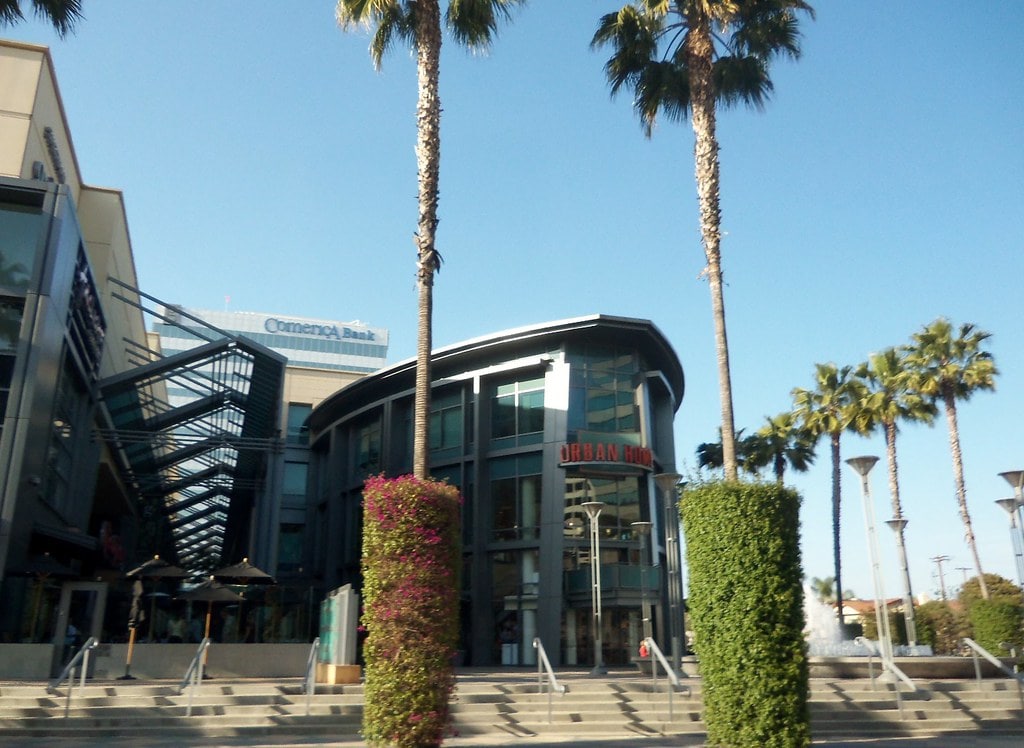
Cultural Peak: Teenage Life and Media Symbol
In the early 1980s, the Sherman Oaks Galleria became something more than a shopping mall. It showed up on movie screens and in radio hits, turning into shorthand for Valley life itself.
Principal photography for Fast Times at Ridgemont High began on November 2, 1981, and lasted eight weeks, with the Galleria's Pacific 4 theater clearly visible in the background.
The 1983 film Valley Girl used the site, too, though most of its interior shots came from another mall.
Around the same time, Frank Zappa's 1982 single Valley Girl mentioned the Galleria by name, even if he accidentally moved it a few blocks south to Encino.
His daughter, Moon Unit Zappa, wrote her "Valley Speak" dialogue from what she heard at the mall's parties and food courts.
The image stayed. Teenagers went to the Galleria to shop, see movies, and hang over the railings with milkshakes in their hands.
The mall turned into a stage for everyday life, filled with chatter, perfume, and the hum of air conditioning.
It wasn't about buying anything. It was about being there. For kids in the Valley, it felt like the future had shown up, and it had a parking lot big enough for everyone.
By the middle of the decade, the Galleria was everywhere. It stopped being just a mall and became part of the story people told about growing up.
It stood for freedom, noise, and that strange rhythm of teenagers killing time under bright lights.
For a few years, the whole Valley seemed to orbit it. The mall ruled, and everyone knew it.
First Cracks: Decline, Earthquake, and Legal Battles
The 1990s introduced a series of financial, physical, and legal challenges for the Sherman Oaks Galleria. In 1993, the two department-store anchors, Robinsons and May Company, merged to form Robinsons-May.
At the Galleria, both stores were converted into Robinsons-May: the northern anchor handling men's and home departments, the southern anchor women's and children's.
This consolidation reduced the mall's retail draw.
Then on January 17, 1994, a 6.7-magnitude earthquake struck the San Fernando Valley at 4:31 a.m. The Galleria closed for eleven days for repairs but reopened relatively quickly.
The larger problem lay in the mall's anchor tenant: the southern store's third floor remained shuttered for nearly four years, reopening only in mid-1998.
The mall's owners alleged in a 1998 suit that the prolonged closure drove off adjacent third-floor tenants due to a lack of traffic.
Robinsons-May counter-alleged poor mall promotion and management. The dispute culminated in hearings scheduled for July 27, 1998, and a settlement in January 1999.
As part of that settlement, Robinsons-May vacated the anchor space by April 1, 1999.
By that date, the original incarnation of the Galleria - once new, magnetic, full of teen energy had become what the Los Angeles Times called a "moribund money-loser."
The story of its decline is one of anchor instability, physical disruption, tenant flight, and litigation - a textbook case of how the enclosed-mall model began to fail, especially in a region where land, traffic, and competition all shifted rapidly.
Reinvention: Acquisition, Transformation, and New Identity
In 1997, the Los Angeles-based real-estate investor Douglas Emmett purchased the Sherman Oaks Galleria in an off-market deal for $51 million, reflecting roughly $51 per square foot for the roughly 1-million-square-foot property.
The low price recognised the mall's deteriorated condition, legal entanglements, and a retail market under strain.
Douglas Emmett pointed to the mall's location near the interchange of the 101 and 405 freeways, with 600,000 cars a day on the 405 alone, as an asset worth salvaging.
From 1998 onward, Douglas Emmett teamed with design firm Gensler to devise a redevelopment.
The prior "boxy, fortress-like" mall was demolished largely or transformed; entrances reopened to the street, plazas and promenades took over interior corridors.
The goal: convert a dying enclosed mall into a 24-hour business-and-lifestyle campus combining Class-A office space with retail and entertainment.
In April 1999, the mall closed for major renovation. Reopened in 2002 as a mixed-use open-air centre, only the old theatre court (formerly Pacific 4) remained part of the original structure.
Costing around $200 million in capitalised redevelopment (on top of the initial acquisition), the all-in cost approached $250 million.
Post-2002, the Galleria re-emerged as a hybrid: roughly 700,000 sq ft of Class-A office in four buildings (including a 16-story tower) plus roughly 300,000 sq ft of retail and entertainment.
Major industry tenants (studios, media firms, financial services) took space in the office component; retail tenants included national chains and restaurants positioned around the open plazas and promenades rather than behind anchor warehouses.
The strategy recognised that foot traffic would no longer rely on department stores alone, but on mixed uses, experience, and location.
Present State: A Campus for Work, Retail, and Lifestyle
As of 2025, the Sherman Oaks Galleria spans about 1 million sq ft of combined office and retail-entertainment space: around 750,000 sq ft of office and about 250,000 sq ft of retail.
The retail-entertainment component houses tenants ranging from gym chain 24 Hour Fitness, King David Bespoke Suits, and The Cheesecake Factory to restaurants like P.F. Chang's, Buffalo Wild Wings, Starbucks, Hana Grill, Almost Famous, and Ben & Jerry's.
The cinema has its own evolution: the 16-screen "Pacific Galleria 16" opened in 2001; in November 2007, it became an ArcLight Cinemas complex.
On June 18, 2021, the parent company filed for Chapter 7 bankruptcy, and the theatre reopened under the Regal Cinemas banner in July 2021 with upgrades including IMAX, ScreenX, and 4DX.
In January 2023, Regal had announced a possible closure (February 15) unless the lease was renegotiated.
By May 2023, the lease was extended, and in May 2025, Regal announced the addition of a new IMAX screen scheduled for 2025.
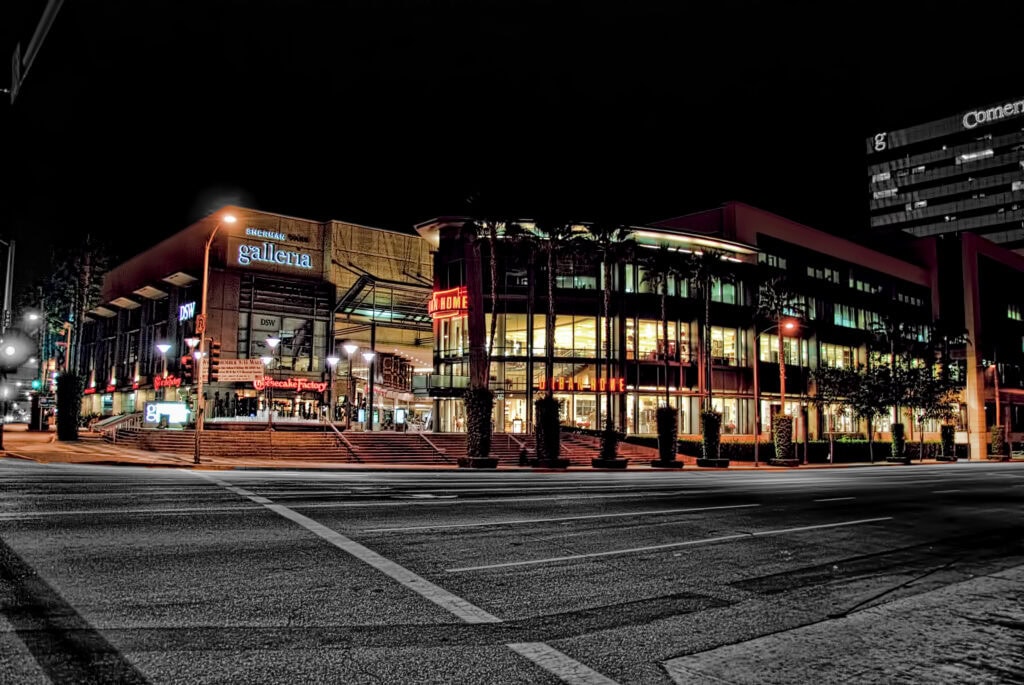
Looking Ahead: Surrounding Growth and Future Potential
The next phase of the Sherman Oaks Galleria story is already taking shape.
In February 2025, work began on Via Avanti, a 325-unit apartment complex with roughly 40,000 square feet of retail space next door at 4815-4827 Sepulveda Boulevard.
The new development will bring residents within walking distance of the Galleria and add more storefronts to the area.
The changes point to a broader shift in how the property fits into the Valley. The Galleria is now part of a larger mixed-use network rather than a standalone mall.
New housing, upgraded theaters, and a steady rotation of restaurants suggest a place built to adapt, not fade.
Its success isn't guaranteed, but its location, layout, and constant reinvestment keep it relevant.
The Sherman Oaks Galleria no longer resembles the enclosed mall that defined the 1980s.
It has become a business campus with restaurants, offices, and entertainment tied to a growing neighborhood. In a city that keeps reinventing itself, the Galleria has learned the same trick.

